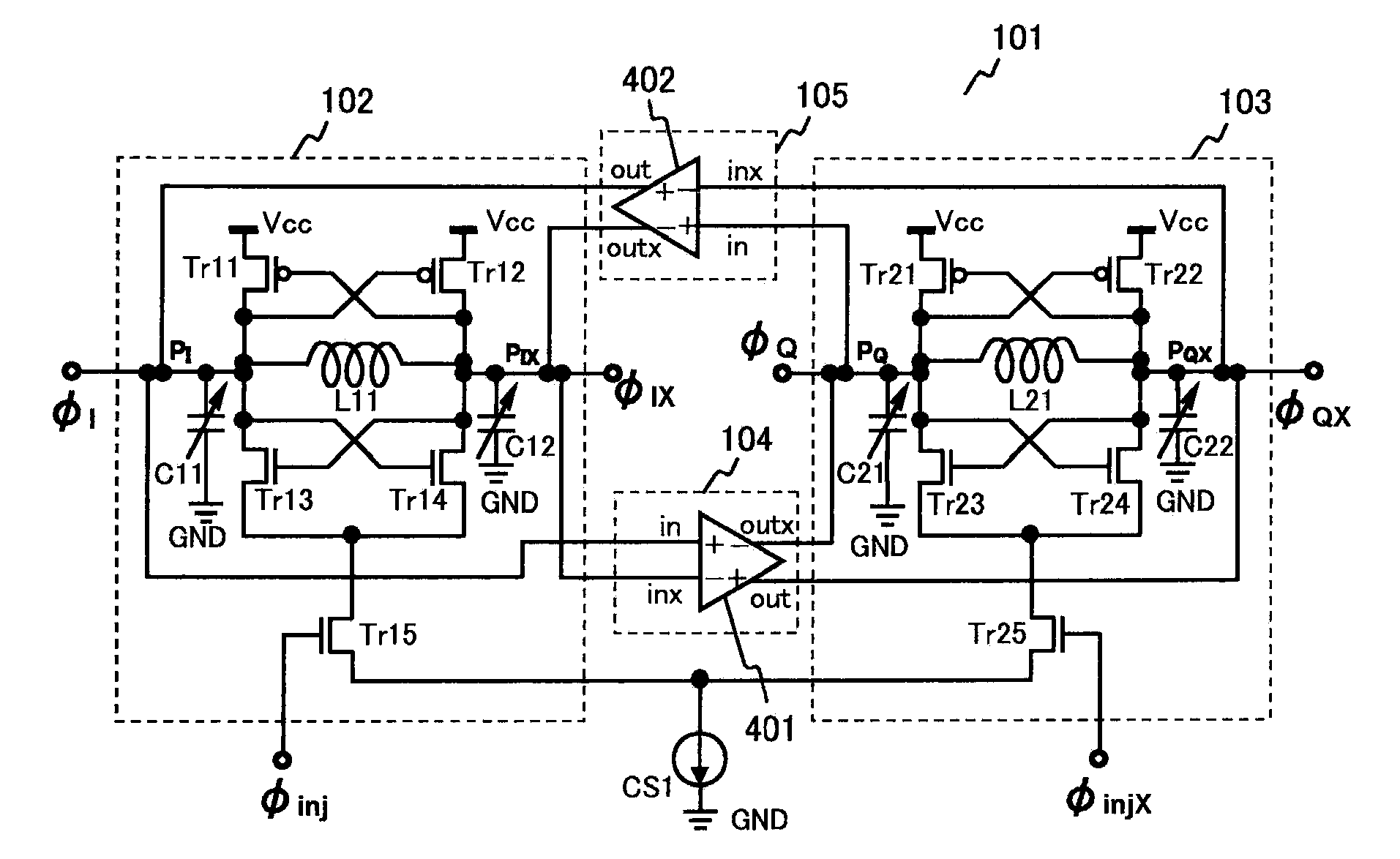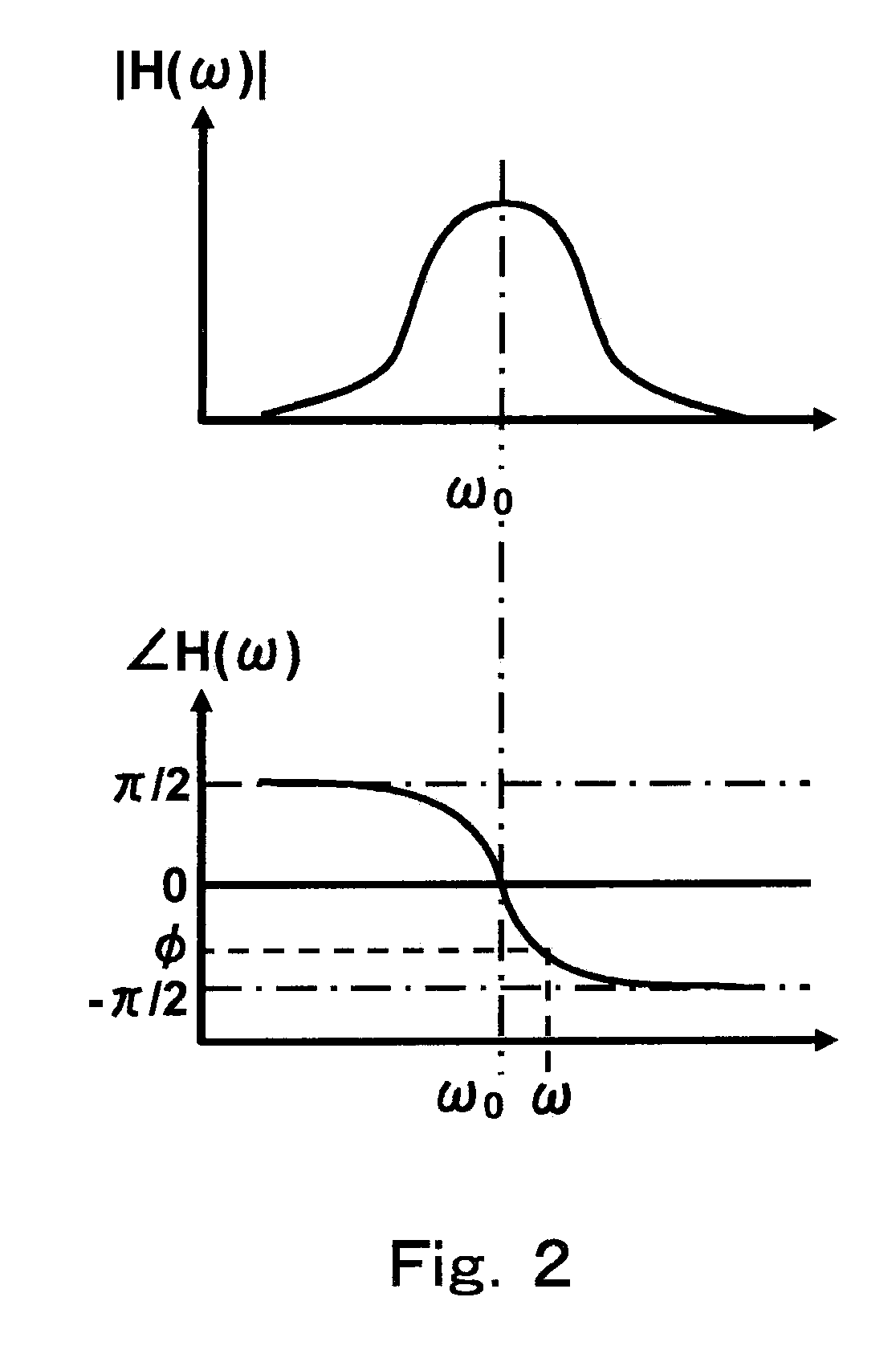Clock frequency dividing circuit
a frequency dividing circuit and frequency dividing technology, applied in the direction of oscillator generators, continuously circulated pulse counters, pulse techniques, etc., can solve the problems of small power consumption and output phase noise of frequency dividing circuits using injection lock techniques, problems in size, cost,
- Summary
- Abstract
- Description
- Claims
- Application Information
AI Technical Summary
Benefits of technology
Problems solved by technology
Method used
Image
Examples
first embodiment
[0029]The first frequency dividing circuit 102 and the second frequency dividing circuit 103 receive two-phase external clocks φinj and φinjx each with a frequency 2ω which are injected from an external part, and generate four-phase clocks, that is, a clock φI: (VI COS(ωt−θ)) and a clock φQ: (VQ COS(ωt−θ±π2)), which result from one-half frequency dividing of the external clocks φinj and φinjx, and clocks φIX and φQX which are complementary signals resulting from the inversion of the clocks φI and φQ. The complementary signals, that is, the clocks φIX and φQX are inverted clocks of the clocks φI and φQ and are not shown here. Further, since FIG. 1 shows a single-ended structure, the clock φQ is coupled to the clock φIX which is the complementary signal, and the clock φQX which is the complementary signal is coupled to the clock φI after the clocks φQ and φQX are multiplied by −1 to be phase-shifted in a reversing part 116. This will be described in detail in a
[0030]The first frequenc...
second embodiment
[0088]In the foregoing second embodiment, the use of the analog multipliers as the mixers 108 and 109 in the first frequency dividing circuit 102 and the second frequency dividing circuit 103 makes it possible to realize a clock frequency dividing circuit with a wider lock range.
[0089]Further, the phase difference (φI−φQ) between the generated clocks φI and φQ is determined depending on the magnitude relation between ω and ω0, irrespective of the initial state of the circuit components included in the first frequency dividing circuit 102 and the second frequency dividing circuit 103, and therefore, it is possible to realize a clock frequency dividing circuit which is capable of constantly generating stable four-phase clocks with phase guarantee.
[0090]Next, a third embodiment will be described. FIG. 7(a) and FIG. 7(b) show a transconductance amplifier 401b of the clock frequency dividing circuit which is different from the transconductance amplifier 401 in the first embodiment and th...
PUM
 Login to View More
Login to View More Abstract
Description
Claims
Application Information
 Login to View More
Login to View More - R&D
- Intellectual Property
- Life Sciences
- Materials
- Tech Scout
- Unparalleled Data Quality
- Higher Quality Content
- 60% Fewer Hallucinations
Browse by: Latest US Patents, China's latest patents, Technical Efficacy Thesaurus, Application Domain, Technology Topic, Popular Technical Reports.
© 2025 PatSnap. All rights reserved.Legal|Privacy policy|Modern Slavery Act Transparency Statement|Sitemap|About US| Contact US: help@patsnap.com



